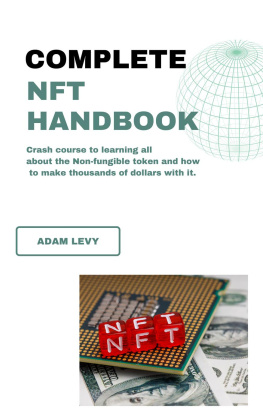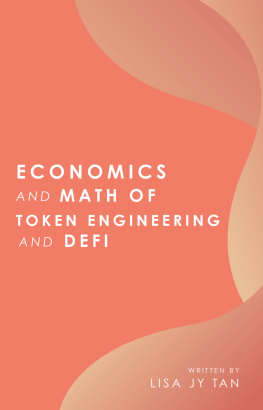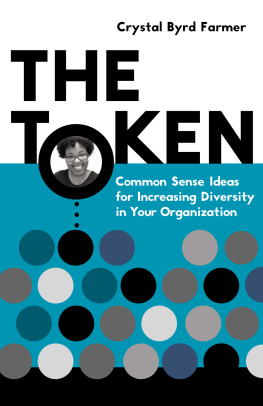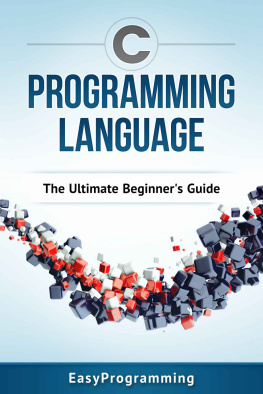The Ultimate Non-Fungible Token (NFT)
Guidebook
Copyright 2021 by Pen Name
All rights reserved.
No part of this book may be reproduced in any form or by any electronic or mechanical means, including information storage and retrieval systems, without written permission from the author, except for the use of brief quotations in a book review.
Contents
Little pretext you should know:
In brief:
- Non-fungible tokens (NFTs) are digital assets that are provably unique, creating digital scarcity. They can't be duplicated or divided.
- They have many use cases, including for digital collectibles, music, artwork, and in-game tokens.
What Is Fungibility?
Fungible means changeable. It is proven that fungible assets are actually the odd ones out. A currency is a classic example of a fungible asset. Five dollars is always five dollars no matter the serial number on the specific five-dollar bill, or whether its five dollars sitting in your bank account. The ability to replace a five-dollar bill with another five-dollar bill (or five ones, for that matter) is what makes currency fungible. Fungibility refers to an asset's ability to be exchanged with a similar asset without sacrificing its value. Fungibility also defines an asset's characteristics, such as divisibility and value.
For example, one $10 dollar bill is identical to another $10 dollar bill in terms of value. As such, when you borrow a $10 dollar bill from someone, you don't have to return the exact same note, since another of its kind has the same value.
In the cryptocurrency sector, one BTC has the same value as any other BTC. However, the game changes when we cross over to non-fungible tokens. An NFT crypto token has a distinct value from any other similar token. Individual characteristics dictate their uniqueness, hence, they are non-fungible, much like real-world assets like rare stones, works of art and collector luxury items.
Note that fungibility is relative ; it really only applies when comparing multiple things. Consider business class, economy class, and first-class flight tickets. Each ticket is roughly fungible within its class , but you cant fairly swap a first- class ticket for a business class ticket. Even the chair youre sitting in is roughly fungible with a chair of the same model, unless youve developed a special attachment to your particular chair.
Interestingly, fungibility can also be subjective. Back to the flight ticket example, a person who cares about sitting in a window seat and an aisle seat might not consider two economy class tickets interchangeable. Similarly, a rare penny might be worth 1 cent to me but worth much more to a coin collector. Well see that some of these nuances become important when representing these items on blockchains.
Cryptocurrencies, utility tokens, security tokens, privacy tokens digital assets and their classifications are multiplying and evolving right alongside cryptographic and blockchain technology.
Non-fungible tokens (NFTs) are another example of the fast-paced change in the industry. In this guide we explore what they are, how they work, and how they're being used.
Non-fungible tokens (NFTs) are unique, digital items with blockchain- managed ownership. Examples include collectibles, game items, digital art, event tickets, domain names, and even ownership records for physical assets.
If youve been living in the crypto world for a while, youve likely heard of the term Non-Fungible Token, or NFT. Maybe youre a doubter, a believer, or perhaps you still dont really know what exactly a non-fungible token is. In any case, this ebook is for you!
As a marketplace for NFTs, OpenSea has a unique viewpoint. We have seen nearly every NFT-related project that has come online since late 2017 - when the first NFT standard emerged. In fact, well bet you a Gods Unchained
Card that if you ask us about an NFT project, we have heard of it and likely talked to the developers at some point! The NFT ecosystem is an integrated group of unbelievable innovators.
Basically this e-book is purported to provide an in-depth overview of non- fungible tokens, the technical anatomy of an ERC721, the history of the NFT, common misconceptions about NFTs, and the current state of the NFT market. We hope it will be relevant both to folks who are new to the space, as well as those who already know about NFTs but want to better understand the nuances of their inner workings.
A non-fungible token (NFT) is a cryptocurrency token that is indivisible and unique. One NFT cannot be interchanged with another NFT, and the whole cannot be broken down into smaller parts and used. NFTs offer myriad options for creating and trading digital assets such as original artwork and blockchain-integrated collectible games like CryptoKitties. NFTs are useful for proving the scarcity and provenance of rare assets, both digital and real-world.
Non-fungible tokens are mainly built on Ethereum using the ERC-721 token standard.
What Are Fungible Tokens?
Fungible tokens are tokens that are tradable for each other, and their value remains constant. In the above example, Bitcoin is a fungible token because it has the same value regardless of its owner or history.
What is a non-fungible token?
Non-fungible assets are just normal stuff. On the other hand Fungible assets are the odd ones out!
Non-fungible tokens are digital assets that contain identifying information recorded in smart contracts.
Its this information that makes each NFT unique, and as such, they cannot be directly replaced by another token. They cannot be swapped like for like, as no two NFTs are alike. Banknotes, in contrast, can be simply exchanged one for another; if they hold the same value, there is no difference to the holder between, say, one dollar bill and another.
Non-fungible tokens (NFT) are digital assets that represent a wide range of unique tangible and intangible items, from collectible sports cards to virtual real estate and even digital sneakers.
One of the main benefits of owning a digital collectible versus a physical collectible like a Pokemon card or rare minted coin is that each NFT contains distinguishing information that makes it both distinct from any other NFT and easily verifiable. This makes the creation and circulation of fake collectibles pointless because each item can be traced back to the original issuer.
A non-fungible token (NFT) is a cryptocurrency token that is indivisible and unique. NFTs offer myriad options for creating and trading digital assets such as original artwork and blockchain-integrated collectible games like CryptoKitties.
Unlike regular cryptocurrencies, NFTs cannot be directly exchanged with one another. This is because no two NFTs are identical even those that exist on the same platform, game or in the same collection. Think of them as festival tickets. Each ticket contains specific information including the purchasers name, the date of the event and the venue. This data makes it impossible for festival tickets to be traded with one another.
The vast majority of NFT tokens were built using one of two Ethereum token standards (ERC-721 and ERC-1155) blueprints created by Ethereum that enable software developers to easily deploy NFTs and ensure theyre compatible with the broader ecosystem, including exchanges and wallet services like MetaMask and MyEtherWallet. Eos, Neo and Tron have also released their own NFT token standards to encourage developers to build and host NFTs on their blockchain networks.













